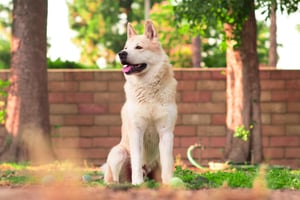Training your Gordon Setter is a rewarding experience. This guide provides you with all the...
Leash Training a Puppy: Everything You Need to Know
Leash training a puppy is an essential part of teaching them how to behave in public, and it’s important to start early. This comprehensive guide will cover the basics of leash training, how to make it a positive experience, and what to do when things don’t go to plan.
What Is Leash Training?
Leash training is the process of teaching a puppy to walk on a leash and obey commands when out in public. It is an important part of puppy training, as it helps to keep them safe, and allows them to explore their environment without getting into trouble.
Leash training should start as soon as you bring your puppy home, as it is easier for them to learn when they are young. The basics of leash training involve teaching your puppy to walk beside you on a loose leash, and to obey commands such as “sit”, “stay” and “come”.
How to Make Leash Training a Positive Experience
It is important to make sure that leash training is a positive experience for your puppy. To do this, you should use positive reinforcement techniques such as praise, treats, and toys.
When your puppy is on the leash, make sure to reward them for good behaviour and ignore any bad behaviour. This will help to reinforce the behaviours you want, and discourage the behaviours you don’t want.
It is also important to make sure that your puppy is comfortable wearing a leash. This means using a leash that is the correct size and weight for your puppy, and making sure that it is not too tight or too loose.
What to Do When Leash Training Isn't Going to Plan
If your puppy is not responding to your leash training efforts, there are a few things you can do. Firstly, it is important to make sure that you are being consistent with your training, and that you are rewarding your puppy for good behaviour.
You can also try changing up your training routine to make it more interesting for your puppy. This could include changing the location of your training sessions, adding new commands, and using different rewards.
If your puppy is still not responding, it may be worth seeking professional help. A qualified dog trainer can provide advice and guidance, and can help to identify any underlying issues that may be causing the problem.
Conclusion
Leash training is an important part of puppy training, and it is important to start early. To make sure that it is a positive experience for your puppy, it is important to use positive reinforcement techniques, make sure that your puppy is comfortable wearing a leash, and be consistent with your training.
If your puppy is not responding to your leash training efforts, it is important to make sure that you are being consistent with your training, and to change up your training routine to make it more interesting for your puppy. If this still doesn’t work, it may be worth seeking professional help.



